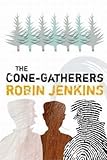Rating: 




The Cone Gatherers: A Haunting Story of Violence and Love (Canongate Classics)
This short novel must rightly be regarded as a modern classic. It has been compared to ‘Of mice and men’, but the focus is not just on the cone gatherers, but also the complex figure of Duror, the gamekeeper. The challenge put by Robin Jenkins, I believe, is the dichotomy, or division between good and evil, and the different feelings about imperfection, as expressed by the characters..
The second world war, with it’s Nazi holocaust, genocide and revenge, is a fitting back-drop.
Others seem to see Duror as wholly evil, but this is too simplistic. For example, Mrs Logie, his mother-in-law (which was fitting!)appears by her acid comments to ‘see’ the inner Duror, feels her daughter’s paralysis to be the result of Duror’s sins (p35), and this shapes her treatment of him. This type of religious thinking is surely as flawed as Duror’s?
Freud would have placed the root of Duror’s obsessional thoughts in his childhood, and the novel tells of how Duror as a child was repelled by anything living that had an imperfection or deformity (p19), and the question in my mind at least, was the murder of the deformed Calum inevitable, or could someone have intervened to help the tormented Duror? With each of the subsidary characters, there seems a possibility, but it is always inadequate, or too late.
Of course, for many, the subject addressed may repel, but this novels offers some insight into an obsessive personality, the challenge of self-interest, and avoiding the consequences.
Robin Jenkins
Author of a number of superb novels including The Changeling, Happy for the Child, The Thistle and the Grail and Guests of War, he is rapidly attaining recognition as one of Scotland’s greatest writers. The themes of good and evil, of innocence lost, of fraudulence, cruelty and redemption shine through his work. His novels, shot through with ambiguity, are rarely to be taken at face value. He published his first book, So Gaily Sings the Lark, at the age of thirty-eight, and by the time of his death in 2005, over thirty of his novels were in print.
